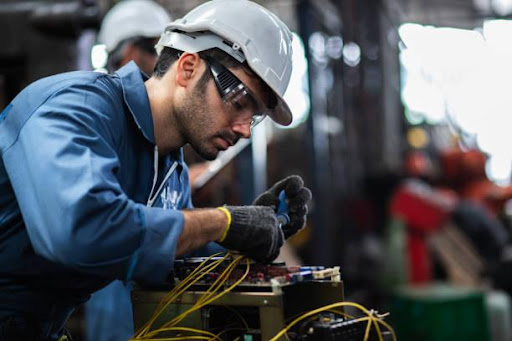Incredibly Useful Commercial Roofing Tips for Small Businesses

The roof of your commercial property has to endure all the elements from storms, the scorching heat of the sun, to those unforgiving winters. This together with getting stepped on by your HVAC personnel and maintenance crew makes your commercial roof vulnerable to damage.
There are many questions to consider when you are starting your own business such as knowing the best commercial roofing material to buy or how often you should contact a flat roofing experts for inspections or repairs. Not to even mention the best way to maintain your roof.
This guide contains practical tips for commercial roofs to address all your concerns and save yourself from an unnecessary headache. Get the peace of mind as a small business owner of having a durable, leak-free roof.
8 Commercial Roofing Tips for Your Small Business
Eight carefully compiled useful tips to help you pay more attention to your roof.
Choose the right roof material
Everyone wants a roof that’s durable with a long lifespan. First and foremost, it is vital to make the right decision in choosing the material for your roofing.
Roofing material differs from one another in the following ways:
- TPO – A new and fast becoming popular material that resists UV radiation and reduces the solar heat gain of your building. This helps to keep your building cool and reduces your energy bills.
- EPDM – Is strong and flexible and made from extremely durable synthetic rubber. It resists damage such as punctures, and tears. It is light-weight, and recyclable.
- TTR – A combination of EPDM and spray polyurethane foam that has the benefits of both materials and eliminates the negative ones.
- Hire commercial roofing services for professional inspections
Your commercial-grade roof should ideally be inspected in the spring and again in the fall. These are the best times to prepare your roof for extreme temperatures. It is best to establish a schedule for professional inspections.
Simple DIY inspections must be done in-between the formal bi-annual inspections. There’s no need for you to hire contractors for these simple visual inspections.
Signs to look out for during the DIY inspection:
- Wet and stained ceilings and walls during or after heavy rainfall
- Blistering and lifting on roof
- Foul odors inside your building
- Pooling of water on your roof
- Failing flashings
- Gaps in the seaming
Conducting a simple inspection is never a waste of time and can actually save you thousands of dollars for a new roof when you spot problems early.
- Address roofing problems as soon as possible
Never delay fixing minor commercial roofing problems that can be solved now. Each repair delay of a roofing repair increases the likelihood of future bigger problems.
Start repairs immediately no matter if it is you or your roofing contractor who discovers an existing issue. Even the smallest leak or a blistered roof surface can eventually put someone’s life in danger so avoid the temptation of doing the repairs yourself.
Select a commercial roofing company that is licensed and experienced to ensure that future risks are mitigated. Licensed commercial roof contractors have the knowledge and skills to identify and repair underlying issues and inspect your roof for vulnerabilities.
Consider a commercial roof restoration
A commercial roof restoration is the perfect alternative to a total roof replacement that is cost-effective and requires far less disruption to your operations. It involves the cleaning, repairing of your existing roof and the installation of a new roofing material over the old one. There is no need to remove the existing roof, which is a very disruptive and dirty process.
Once it has been established that your existing roof is in such a state that it will need to be replaced your commercial roofing company will have to verify that your current roof is eligible for a restoration.
There are many business benefits to restoring instead of replacing your commercial roof. The biggest being the huge cost savings of thousands and more in contractor labor and material alone. There are also the landfill costs and lost work hours as you will need to close your business for a few days as your roof gets removed and replaced.
Work with a professional contractor for damage insurance claims
Storms are unavoidable and when a storm hits make sure to take pictures and jot down notes to document evidence of the storm for when any damage to your roof becomes evident in your roof inspection. In the case of a hail storm take note of the size of the hail and afterwards look for dents and leaks that were not there in the past. Get in touch with your insurance provider to report the incident and damage and have your evidence ready.
Most commercial roofing services include assistance to building owners to perform damage inspections and will help provide an estimate as to how much the repairs will cost.
Have a snow removal plan
Snow must never be left on a roof for a long period of time and needs to be removed to prevent poor drainage, water leaking into your building and your commercial roof collapsing. It is important to know how much snow your commercial building roof can handle.
Contract planned snow removal services during winter to make sure that your contractor of choice immediately responds to your call as most roofing companies are fully booked in the winter.
Your roofing contractor or engineer can review your snow removal plan to ensure that your plan is safe and does not increase the risk of a roof collapse.
Eliminate overhanging branches
Tree branches that hang over your commercial roof may look natural and pretty but can cause a lot of damage to your roof and can threaten your roof in many ways.
Your roof surface could get scratched or punctured by branches that break off and fall on your roof. Strong winds rub the sharp edges of branches against your roof and can seriously scratch the surface. This leaves an access point for wildlife to nest, access the building and spread mites.
Leaves and other debris can also fill your gutters and cause your gutters to get clogged. This will cause a backflow of water to pour into your building.
Removing branches can be dangerous and you should hire a professional tree service to remove them.
Be cautious when choosing a roofing contractor
You’ll find a lot of commercial roofing services everywhere, especially online. The internet has made it very easy to find a potential contractor to address your problems.
As with everything you need to be careful in your selection and do your own research to avoid becoming the victim of a roofing scam.
Create a list of potential roofing companies and call them one by one for a quick interview. Ask questions relevant to your needs to help you narrow down your options to the top three best contractors.
It is important that you make a well-informed decision and avoid rushing to strike a deal with a contractor. Look out for contractors that show up after a storm and request money upfront for a roof repair or replacement. These are storm chasers.
Conclusion
These are just a few tips on how to have a commercial roof that lasts so you can enjoy a profitable, stress-free business.
The steps are fairly simple. Start with selecting the right roofing material that is right for your property. Consider commercial roof restoration and repair options before rushing to replace your whole roof.
Create a roof maintenance plan that prioritizes formal inspections at least twice a year. Remember to conduct DIY inspections in between. Lastly, prioritize trustworthy and credible commercial roofing services and do your homework in selecting the right one.



